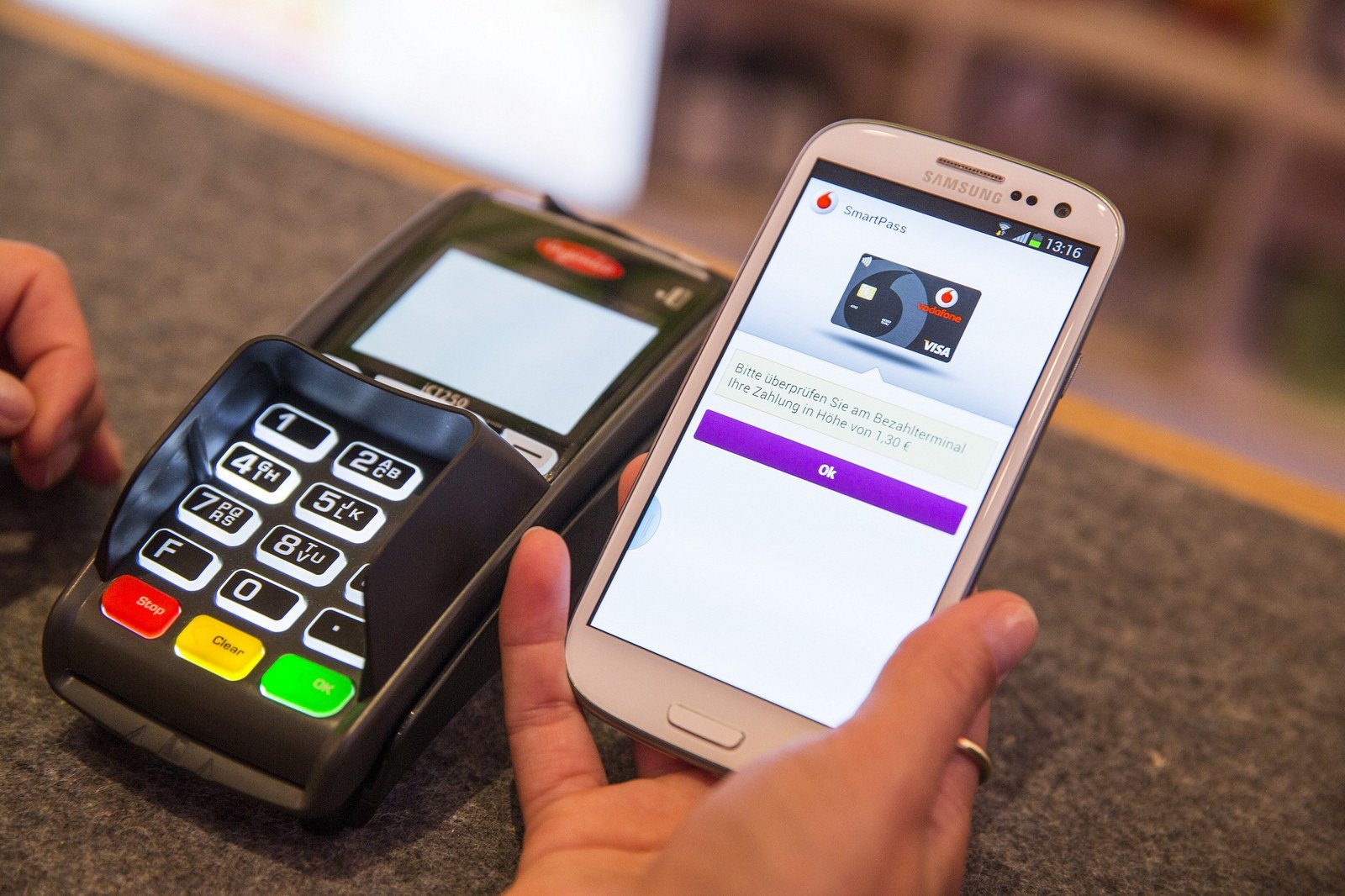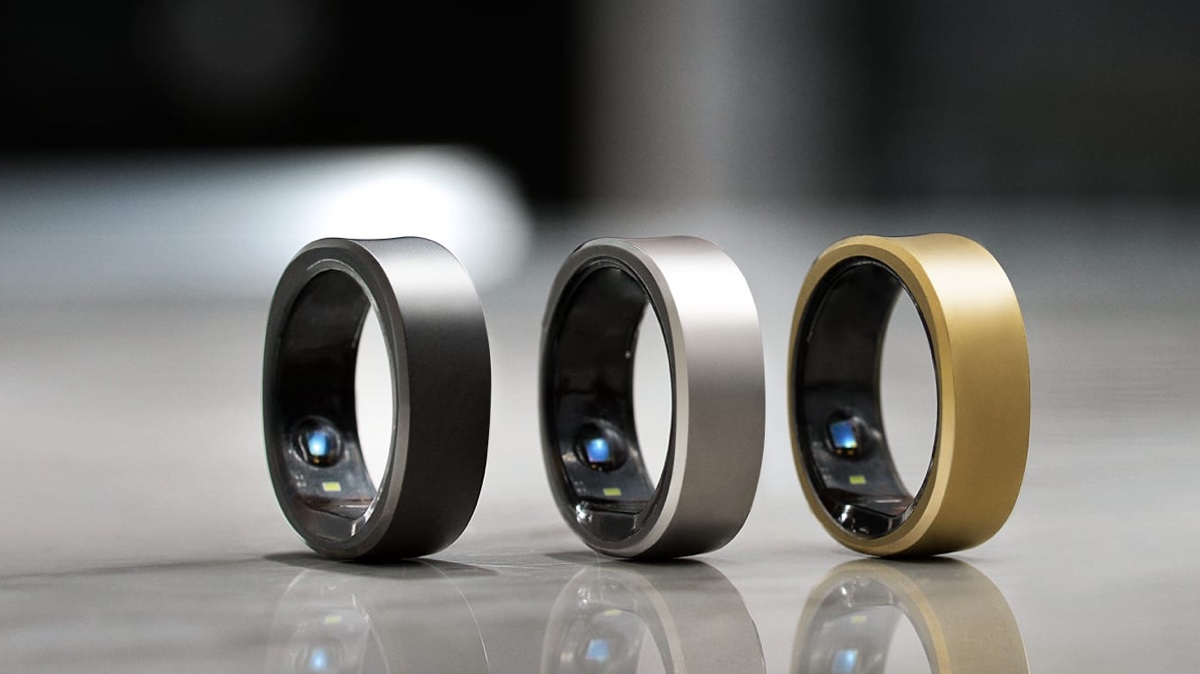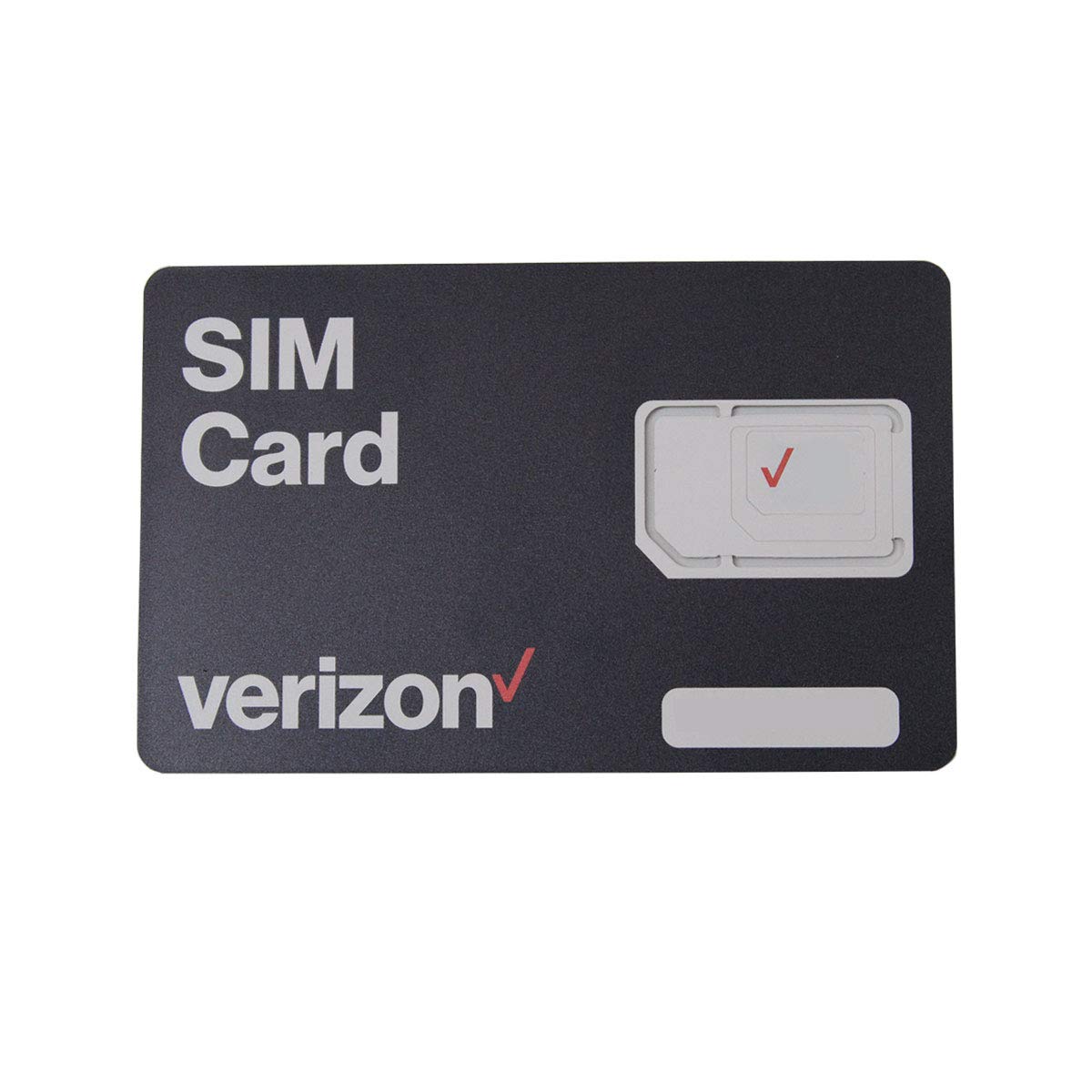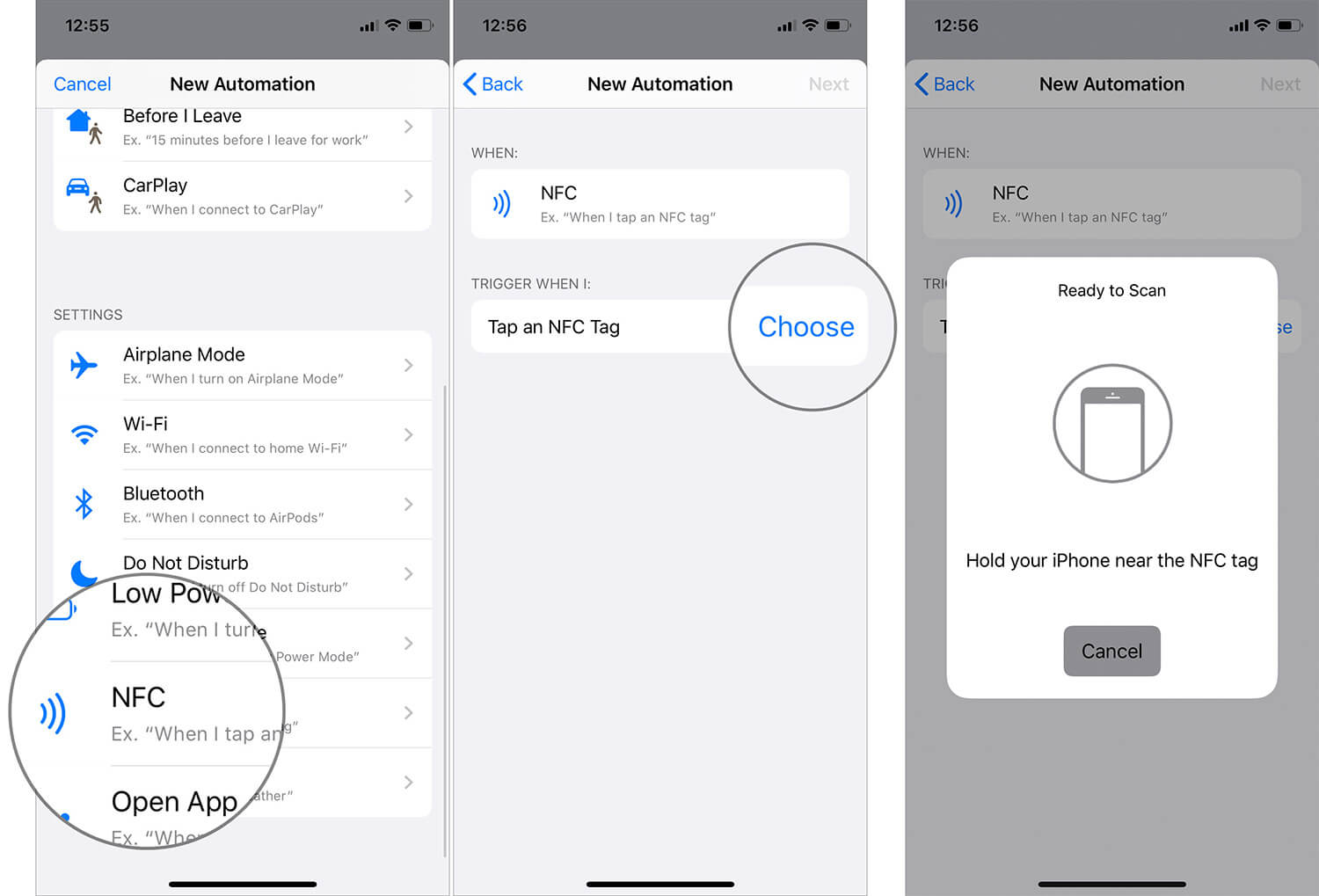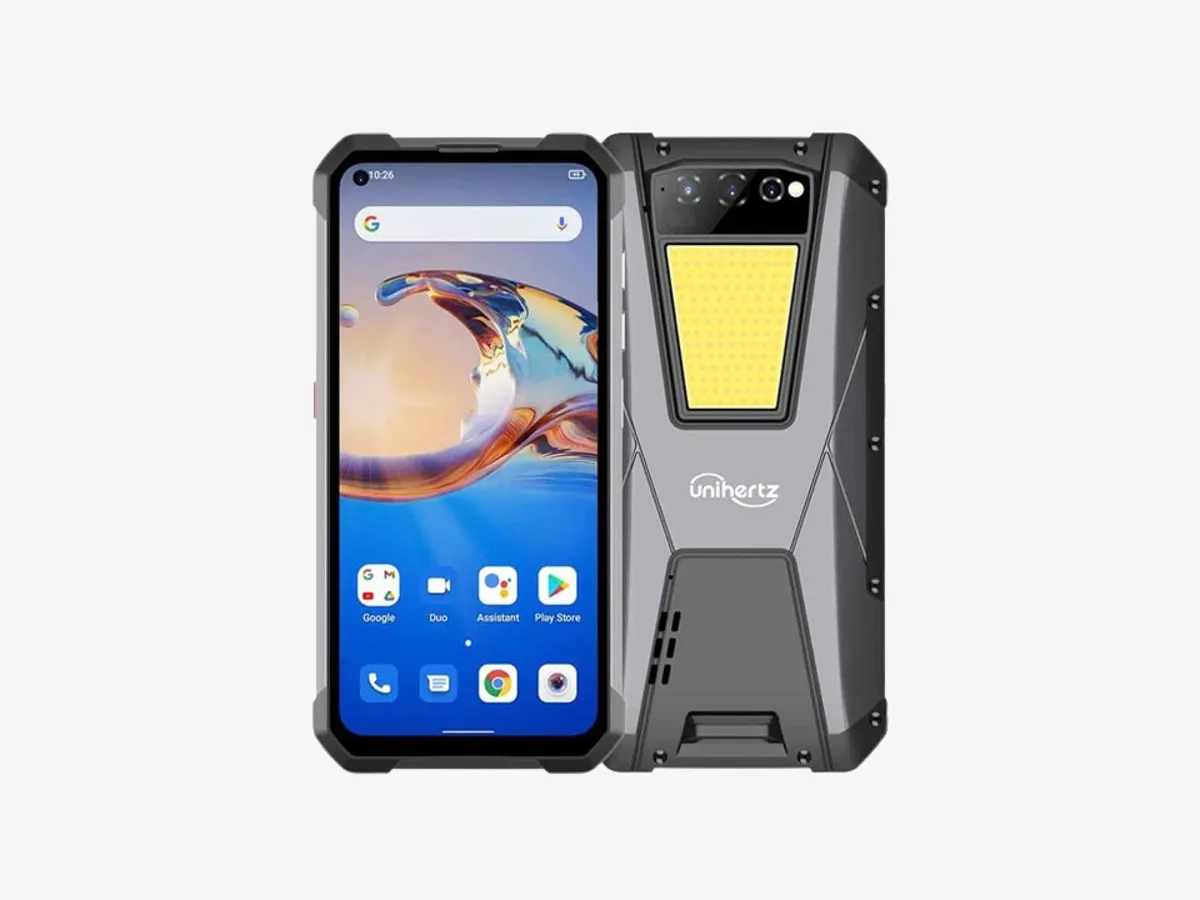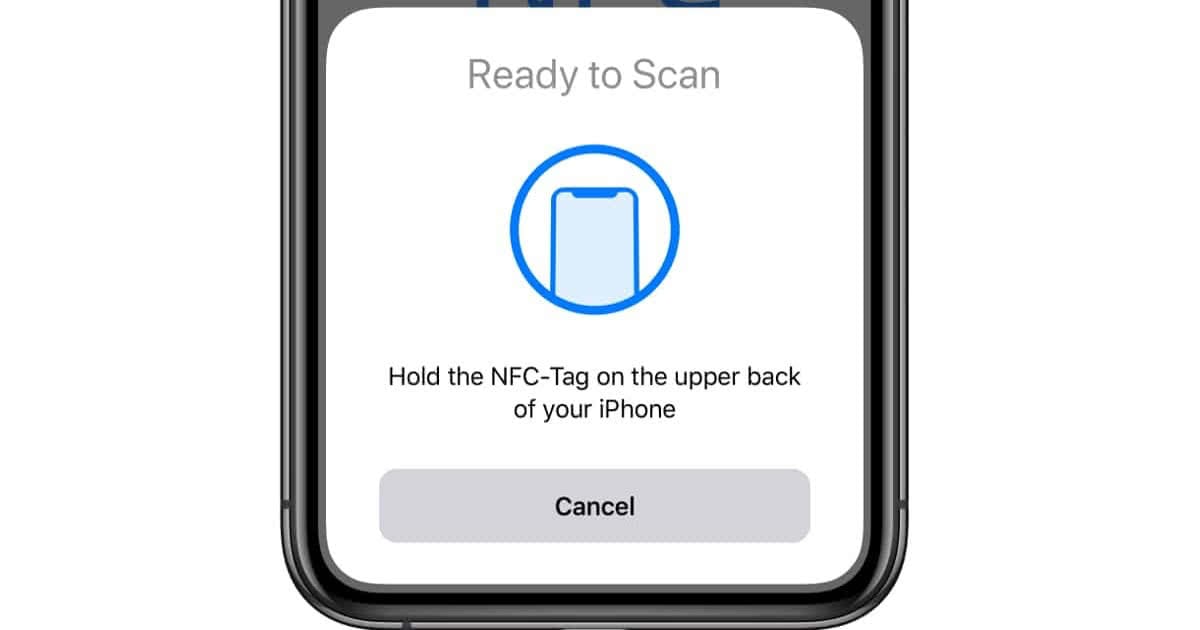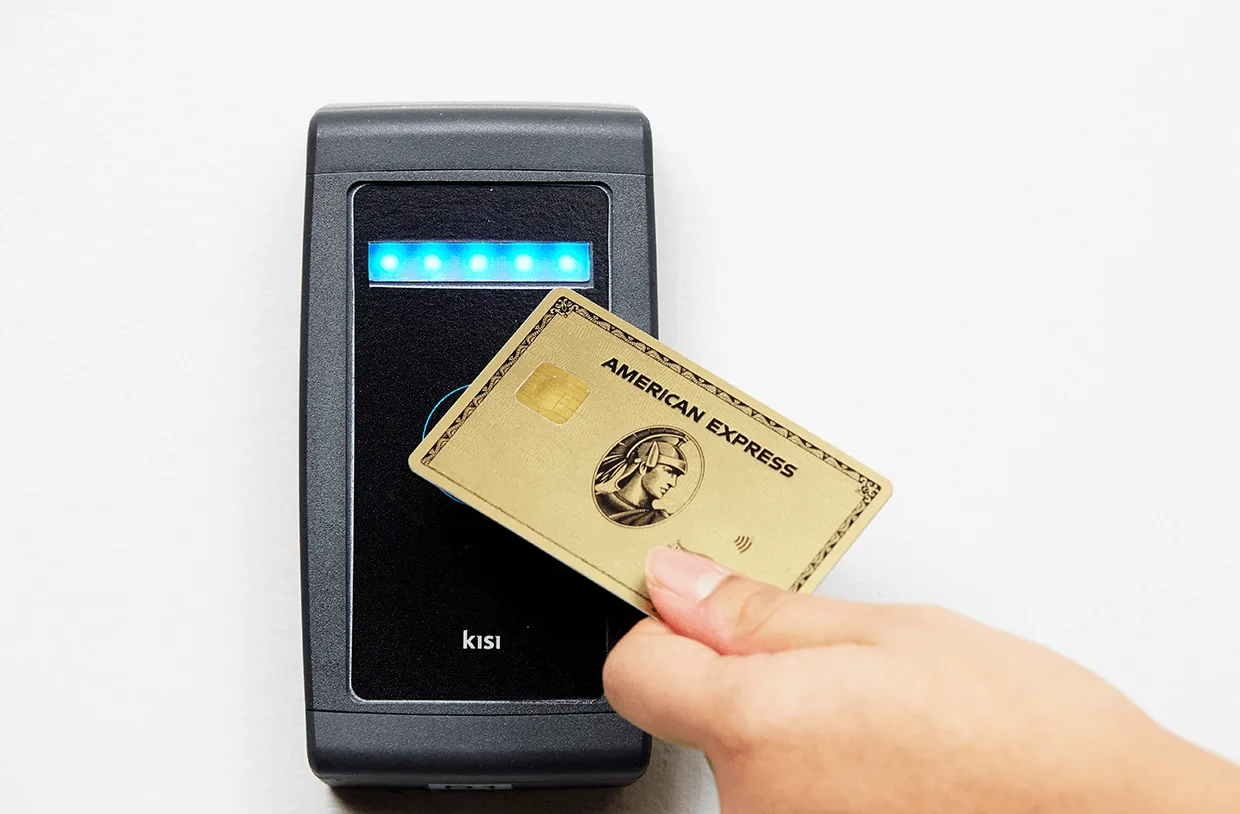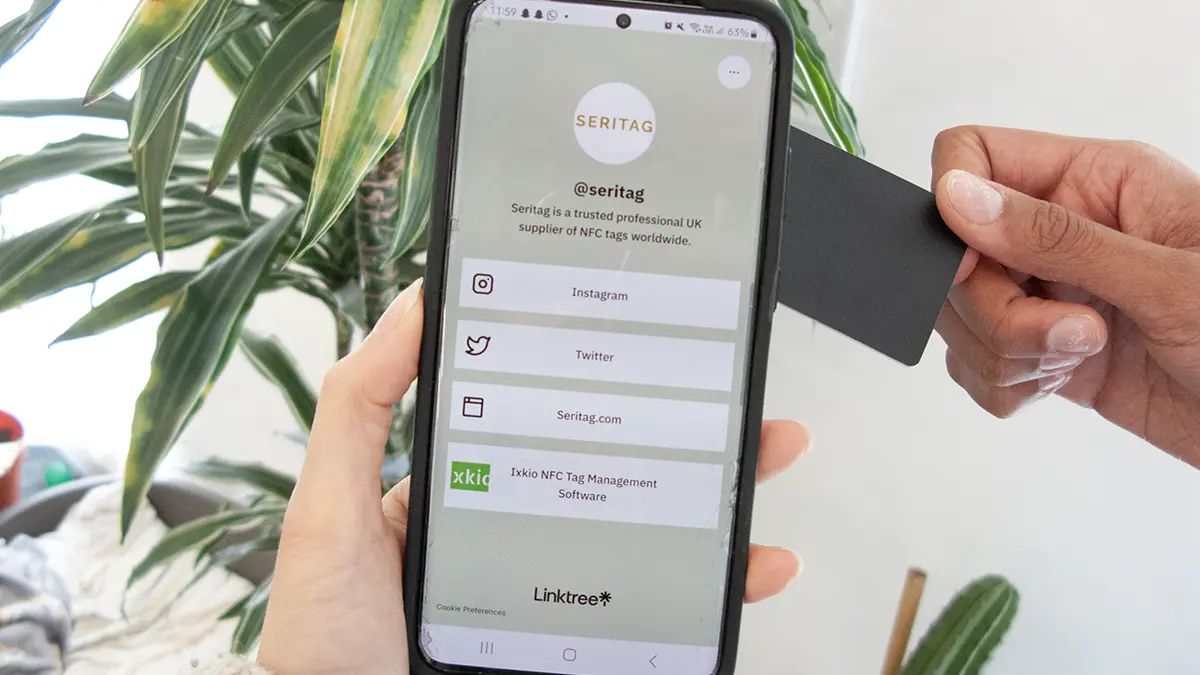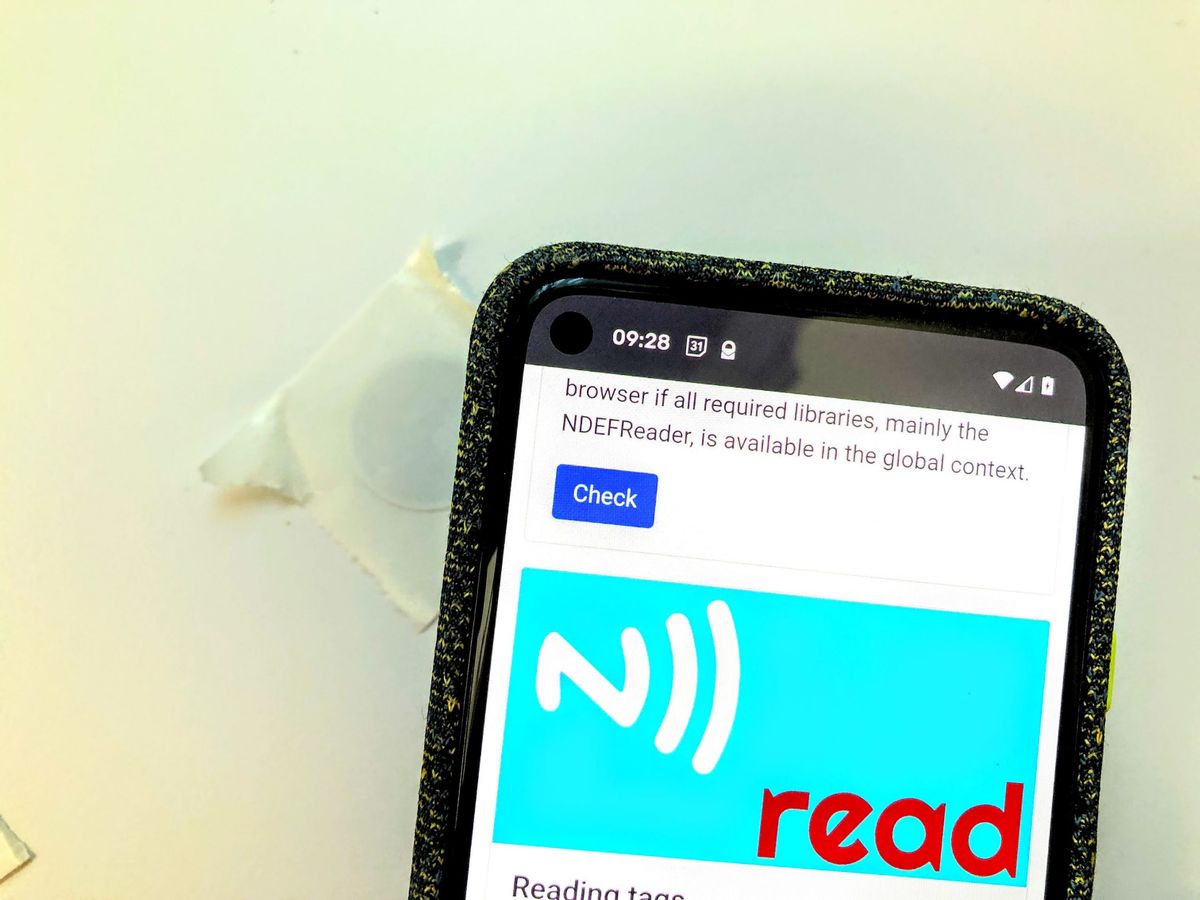Introduction
NFC, short for Near Field Communication, has become a popular feature on modern smartphones. You may have seen the NFC logo or heard about it, but you might be wondering, “What does NFC mean on a phone?” In this article, we will explore the world of NFC and its significance in the mobile technology landscape.
NFC is a wireless communication technology that allows devices to exchange data over short distances. It enables users to easily and securely share information, make contactless payments, and control various devices, such as smart speakers and wearable devices, using their smartphones.
As mobile phones have evolved to become more than just communication devices, NFC has emerged as a convenient and versatile tool. With the rise of digital wallets and the increasing demand for contactless interactions, NFC has transformed the way we interact with our smartphones and the world around us.
But how does NFC actually work? What makes it important on a phone? And how can you make the most out of NFC’s capabilities on your device? In the next sections, we will delve deeper into these questions, exploring the mechanics, applications, and security considerations of NFC.
Key Points:
- NFC enables wireless communication between devices over short distances.
- It allows for seamless sharing of information and contactless payments.
- NFC has become an essential feature on modern smartphones.
- In this article, we will explore the mechanics, applications, and security aspects of NFC.
What is NFC?
Near Field Communication (NFC) is a short-range wireless communication technology that enables the exchange of data between devices simply by bringing them close together. It operates on radio frequency identification (RFID) principles and works on the 13.56 MHz frequency.
NFC is often used for contactless transactions, data transfer, and device pairing. It enables devices to establish a connection by bringing them within a few centimeters of each other, eliminating the need for physical contact or manual configuration. This makes NFC an incredibly convenient and efficient technology for various applications.
One of the key features of NFC is its ability to operate in three different modes: reader/writer mode, peer-to-peer mode, and card emulation mode.
- Reader/Writer Mode: In this mode, the NFC-enabled device acts as a reader or writer, interacting with passive NFC tags or other devices. For example, you can use your smartphone to read information from NFC-enabled smart posters, tickets, or business cards.
- Peer-to-Peer Mode: This mode allows two NFC-enabled devices to communicate with each other and exchange data. It enables quick and easy transfer of files, photos, videos, contacts, or even multiplayer gaming between smartphones.
- Card Emulation Mode: In this mode, an NFC-enabled device can emulate an NFC card, allowing it to be used for contactless payments, access control, or ticketing. This mode turns your smartphone into a virtual payment card, making transactions more convenient and secure.
NFC is different from other wireless communication technologies, such as Bluetooth and Wi-Fi, in terms of its range and power consumption. While Bluetooth and Wi-Fi have a longer range and higher data transfer rates, NFC has a shorter range of a few centimeters and lower power consumption. This makes NFC ideal for secure and short-range transactions.
As NFC continues to gain popularity, its applications are expanding. From mobile payments and access control to public transportation and smart home automation, NFC is revolutionizing the way we interact with technology in our daily lives.
Key Points:
- NFC is a short-range wireless communication technology that enables data exchange between devices.
- NFC operates in reader/writer, peer-to-peer, and card emulation modes.
- It has a shorter range and lower power consumption compared to Bluetooth and Wi-Fi.
- NFC is used for contactless transactions, data transfer, and device pairing.
How Does NFC Work?
Near Field Communication (NFC) works based on radio frequency identification (RFID) principles. It uses electromagnetic fields to facilitate communication between devices. NFC-enabled devices, such as smartphones and contactless payment terminals, have built-in NFC chips that allow them to send and receive data wirelessly.
When two NFC-enabled devices come into close proximity (usually within a few centimeters), their NFC chips activate, and they establish a connection. This connection allows the devices to exchange information securely and quickly without any physical contact or manual configuration.
The communication between NFC devices occurs in three main steps:
- Initiation: The first step in NFC communication is the initiation or activation phase. When two NFC devices are brought close together, one device generates an electromagnetic field, acting as the initiator, while the other device detects this field and responds, acting as the target. This process is called electromagnetic induction. The initiator and target roles can be swapped between the devices depending on the specific use case.
- Carrier Wave Modulation: Once the devices are in the initiation phase, they modulate an alternating current onto the electromagnetic field. This modulation technique is known as carrier wave modulation. The data to be transmitted, such as contact information or payment details, is encoded onto the carrier wave using a coding scheme.
- Data Transfer: The final step in NFC communication is the actual data transfer. The encoded data is transmitted by variations in the amplitude, frequency, or phase of the carrier wave. The receiving device demodulates the carrier wave and decodes the data, enabling the transfer of information between the devices. This data transfer process is typically fast and reliable.
NFC operates at a frequency of 13.56 MHz, which allows for consistent and secure communication between devices. It also employs various security measures to protect the transmitted data, including encryption and authentication protocols. These security features ensure that NFC transactions, such as contactless payments, are safe and secure.
In addition to its communication capabilities, NFC can also power other devices. NFC-enabled devices can provide a small amount of power to passive NFC tags or other low-power devices. This feature, known as NFC-based wireless charging or wireless power transfer, eliminates the need for batteries or external power sources.
Key Points:
- NFC uses electromagnetic fields to facilitate communication between devices.
- The communication process involves initiation, carrier wave modulation, and data transfer.
- NFC operates at a frequency of 13.56 MHz and employs security measures to protect data.
- NFC can also power other devices through wireless charging.
Why is NFC Important on a Phone?
Near Field Communication (NFC) has become increasingly important on smartphones due to its wide range of applications and benefits. Here are some key reasons why NFC is important on a phone:
1. Contactless Payments: One of the primary uses of NFC on a phone is for contactless payments. With NFC-enabled mobile payment platforms like Apple Pay and Google Pay, users can conveniently make transactions by simply tapping their smartphones on payment terminals. NFC technology ensures secure and encrypted communication, making contactless payments quick, secure, and hassle-free.
2. Seamless Data Transfer: NFC enables quick and seamless data transfer between smartphones and other NFC-enabled devices. Users can easily share contacts, files, photos, and even website URLs by simply tapping their phones together. This makes sharing information between devices effortless and eliminates the need for manual pairing or complex configuration.
3. Easy Pairing and Connectivity: NFC simplifies the process of connecting smartphones to other devices, such as Bluetooth speakers, wireless headphones, or smartwatches. By tapping the NFC-enabled phone to the corresponding device, the pairing process is automatically initiated, saving users the hassle of navigating through settings menus or entering passcodes.
4. Convenient Access Control: NFC can be utilized for various access control applications, such as unlocking doors, accessing secure areas, or validating tickets. Users can tap their NFC-enabled phones on compatible readers or terminals to gain access, eliminating the need for physical keys or tickets.
5. Enhanced Loyalty Programs and Marketing: NFC allows businesses to create interactive and engaging experiences for their customers. NFC tags embedded in promotional materials, such as posters or product packaging, can be tapped by users to receive special offers, discounts, or additional information. This technology enhances loyalty programs, marketing strategies, and customer engagement.
6. Internet of Things (IoT) Integration: NFC plays a crucial role in the integration of smartphones with the Internet of Things (IoT). By leveraging NFC, users can control and interact with various IoT devices, such as smart home appliances, wearable devices, and connected cars. NFC technology provides a seamless and user-friendly interface between the smartphone and the IoT ecosystem.
7. Future Potential: NFC technology is continuously evolving, and its potential applications are expanding. From contactless ticketing and identification to healthcare and augmented reality experiences, NFC has the potential to revolutionize various industries and enhance our daily lives.
Key Points:
- NFC allows for convenient and secure contactless payments on a phone.
- It enables quick and effortless data transfer between smartphones and other devices.
- NFC simplifies pairing and connectivity with Bluetooth speakers, wireless headphones, and more.
- It can be used for access control, loyalty programs, and marketing initiatives.
- NFC integration with the Internet of Things (IoT) facilitates seamless control of connected devices.
- NFC technology continues to evolve and has great potential for future applications.
NFC Use Cases
Near Field Communication (NFC) technology has revolutionized the way we interact with our smartphones and the world around us. Let’s explore some of the key use cases where NFC has made a significant impact:
1. Mobile Payments: NFC-enabled smartphones have transformed the way we make payments. With digital wallet apps like Apple Pay, Google Pay, and Samsung Pay, users can securely and conveniently make contactless payments by tapping their phones on compatible payment terminals. This use case has revolutionized the retail industry by providing a seamless payment experience.
2. Ticketing and Access Control: NFC is widely used for ticketing and access control systems. From public transportation to concerts and sporting events, users can simply tap their NFC-enabled phones on ticket validators or access control terminals to gain entry. This eliminates the need for physical tickets or access cards, streamlining the entire process.
3. File and Content Sharing: NFC facilitates quick and effortless sharing of files, photos, videos, and other content between smartphones. By tapping two NFC-enabled phones together, users can initiate a transfer without the need for internet connectivity or additional apps. This use case is particularly helpful for sharing large files or sensitive information securely.
4. Device Pairing and Connectivity: NFC simplifies the pairing process between smartphones and other devices, such as Bluetooth speakers, wearable devices, or smart home appliances. By tapping the NFC-enabled phone on a compatible device, the connection is automatically established, providing a seamless and hassle-free experience.
5. Loyalty Programs and Marketing: NFC tags embedded in promotional materials or in-store displays enable businesses to create interactive and engaging experiences for customers. By tapping their NFC-enabled phones on these tags, users can receive special offers, discounts, or exclusive content, enhancing loyalty programs and marketing campaigns.
6. Data Storage and Transfer: NFC tags can be used to store and transfer data, such as contact information or website URLs. These tags can be placed on business cards, posters, or product packaging, allowing users to tap their phones and access the information quickly. This simplifies the process of sharing or retrieving data.
7. IoT Device Control: NFC plays a key role in integrating smartphones with the Internet of Things (IoT). By tapping their NFC-enabled phones on IoT devices, users can control and interact with them, whether it’s adjusting the settings on a connected home automation system or unlocking a smart lock.
8. Healthcare Applications: NFC has found applications in the healthcare industry, enabling secure access to medical records or facilitating communication between medical devices and smartphones. It can be used for patient identification, medication management, and monitoring health conditions.
9. Transportation and Travel: NFC technology is being utilized for contactless transit systems, allowing users to tap their phones or NFC cards on transit gates or readers for seamless entry and payment. Additionally, it can be used for electronic boarding passes, enabling travelers to have their tickets stored securely on their smartphones.
10. Authentication and Security: NFC can enhance security by enabling two-factor authentication or secure access to restricted areas. By utilizing an NFC-enabled phone as an authentication token, it adds an extra layer of security for verifying identity and ensuring secure access to sensitive information or premises.
Key Points:
- NFC is used for mobile payments, ticketing, and access control systems.
- It facilitates file and content sharing between smartphones.
- NFC simplifies device pairing and connectivity with other devices.
- It enhances loyalty programs and marketing campaigns.
- NFC tags enable data storage and transfer.
- NFC plays a role in controlling IoT devices.
- It finds applications in healthcare, transportation, and security systems.
Setting up and Using NFC on Your Phone
Setting up and using Near Field Communication (NFC) on your smartphone is usually a straightforward process. While the specific steps may vary slightly depending on the device and operating system, the general guidelines below will help you get started with NFC:
1. Check NFC Compatibility: First, ensure that your smartphone is NFC-enabled. Most modern smartphones, including Android and iPhones, come with built-in NFC technology. However, it’s always a good idea to double-check your device’s specifications or consult the user manual.
2. Enable NFC: On your phone’s settings menu, navigate to the NFC settings. There, you should find an option to enable NFC functionality. Toggle this option to ‘On’ to activate NFC on your device.
3. Customize NFC Settings: Depending on your phone and operating system, you may have additional settings related to NFC. These settings allow you to customize how your phone behaves when NFC is enabled, such as whether to show a prompt when an NFC tag is detected or defining the default action for specific NFC interactions.
4. Tap and Go: Once NFC is enabled on your phone, you can begin using it. For example, for contactless payments, simply hold your phone near the payment terminal with the NFC symbol. The NFC chip in your device will establish a secure connection and complete the transaction.
5. Sharing Content: To share files, contacts, or other content with another NFC-enabled device, ensure that both devices have NFC enabled. Then, open the file or content you want to share, and bring the devices in close proximity. Tap them gently together, and the NFC chips will detect each other and initiate the transfer.
6. Explore NFC Tag Interactions: NFC tags are small adhesive chips that can be programmed to perform specific actions when tapped by an NFC-enabled device. These tags can trigger actions like opening a website, launching an app, or adjusting device settings. To interact with NFC tags, simply place your phone close to the tag and let the NFC chip do the rest.
7. Secure Usage: While NFC offers convenience, it’s important to be aware of potential security risks. Make sure to only initiate NFC connections with devices or tags you trust. Don’t tap your phone on suspicious or unknown sources, and regularly update your device’s software and security patches.
8. Troubleshooting: If you’re experiencing issues with NFC on your phone, try the following steps: ensure NFC is enabled, restart your device, check for any software updates, and make sure there’s no interference (e.g., by removing any phone cases).
By following these steps and exploring the various NFC features on your phone, you can make the most out of this technology and enjoy the convenience and versatility it offers.
Key Points:
- Check if your smartphone is NFC-enabled.
- Enable NFC in your phone’s settings.
- Customize NFC settings based on your preferences.
- For contactless payments, hold your phone near the payment terminal.
- To share content, bring NFC-enabled devices close together and tap gently.
- Interact with NFC tags by placing your phone close to the tag.
- Ensure secure usage by only initiating NFC connections with trusted sources.
- Troubleshoot NFC issues by enabling NFC, restarting your device, and checking for updates.
Compatibility of NFC with Other Devices
Near Field Communication (NFC) technology offers compatibility with a wide range of devices, enabling seamless communication and interaction. Let’s explore the compatibility of NFC with various devices:
1. Smartphones: NFC is commonly found in modern smartphones, both Android and iPhones. This allows for easy pairing and data transfer between NFC-enabled smartphones by simply bringing them close together.
2. Tablets and Laptops: While NFC compatibility is more prevalent in smartphones, some tablets and laptops also come equipped with NFC chips. This extends the convenience of NFC pairing and data sharing to larger screen devices.
3. Smartwatches and Wearable Devices: Many smartwatches and wearable devices incorporate NFC technology for secure and convenient pairing with smartphones. This enables quick and effortless connectivity between your smartphone and wearable devices.
4. Bluetooth Devices: NFC complements Bluetooth technology in many devices. When pairing Bluetooth devices, NFC can simplify the process by automatically initiating the connection through a tap, reducing the need for manual pairing and configuration.
5. Audio Devices: NFC-enabled audio devices, such as speakers or headphones, can be easily connected to smartphones or other NFC-compatible devices with a simple tap. This makes it easier to enjoy wireless audio streaming without the hassle of complex pairing procedures.
6. Contactless Payment Terminals: NFC compatibility is crucial in contactless payment terminals, which are widely available in retail stores, restaurants, and transportation systems. These terminals communicate with NFC-enabled smartphones or payment cards to facilitate seamless and secure transactions.
7. Public Transportation Systems: NFC plays a significant role in contactless ticketing systems used in public transportation systems, such as buses, trains, and subways. Travelers can simply tap their NFC-enabled cards or smartphones on the ticket validators, allowing for swift and convenient entry.
8. IoT Devices: As the Internet of Things (IoT) ecosystem expands, NFC compatibility becomes increasingly important. NFC can be used to connect and control various IoT devices, including smart home appliances, thermostats, cameras, or even car infotainment systems, providing a seamless user experience.
9. Access Control Systems: NFC is widely used in access control systems for secure entry into buildings, offices, or restricted areas. By utilizing NFC-enabled access cards or smartphones, individuals can tap the reader to gain authorized access, ensuring a convenient and secure process.
10. Health Monitoring Devices: Some health monitoring devices, such as blood pressure monitors or glucose meters, utilize NFC to transfer data to smartphones or other compatible devices. This enables seamless tracking and monitoring of health-related information.
Key Points:
- NFC is compatible with smartphones, tablets, and laptops.
- It enhances connectivity with smartwatches and wearable devices.
- NFC simplifies pairing with Bluetooth devices.
- It enables easy connectivity with audio devices, such as speakers and headphones.
- NFC is essential for contactless payment terminals and public transportation systems.
- It plays a role in connecting and controlling IoT devices.
- NFC is crucial in access control systems for secure entry.
- It can be used for data transfer with health monitoring devices.
Security Concerns with NFC
Near Field Communication (NFC) technology offers convenience and versatility, but like any other wireless technology, it also presents certain security concerns. It is crucial to be aware of these concerns and take necessary precautions to mitigate potential risks when using NFC. Let’s explore some common security considerations with NFC:
1. Data Interception: One of the primary security concerns with NFC is the potential for data interception. Since NFC operates over short distances, an attacker within close proximity may attempt to intercept the communication between NFC-enabled devices. This can lead to unauthorized access or data theft. To prevent this, NFC uses encryption and authentication protocols to secure the data during transmission.
2. Unauthorized Access: NFC can be susceptible to unauthorized access when used for contactless payments or access control systems. If an attacker gains physical access to an NFC-enabled device or acquires an NFC card, they may attempt to use it maliciously. To mitigate this risk, devices and cards should be protected with strong passwords, PINs, or biometric authentication.
3. NFC Malware Attacks: Malicious software specifically designed to exploit vulnerabilities in NFC technology can compromise the security of devices. These NFC malware attacks can lead to unauthorized data access, financial fraud, or even control over the victim’s device. To mitigate this risk, it is crucial to regularly update device software and security patches to protect against known vulnerabilities.
4. Unauthorized NFC Tag Interactions: NFC tags, which are programmable chips, can be embedded in various objects or locations. If an attacker places a malicious NFC tag, it may initiate unwanted interactions with an NFC-enabled device. For example, tapping an unknown NFC tag could lead to the installation of malware or unauthorized access to data. Users should only interact with NFC tags from trusted sources.
5. Social Engineering: Social engineering attacks can exploit human interaction with NFC-enabled devices. Attackers may attempt to deceive users into unknowingly tapping their devices on malicious NFC tags or initiating unwanted interactions. Users should be cautious and verify the authenticity of NFC interactions before proceeding.
6. Privacy Concerns: NFC interactions may involve the exchange of personal or sensitive information. It is important to understand the privacy policies and data handling practices of the NFC-enabled apps or services used. Regularly review app permissions, limit unnecessary data sharing, and only use trusted apps or services from reputable sources.
7. Physical Security: Since NFC operates at a short range, physical proximity is required for communication. This presents a risk if a user’s NFC-enabled device is lost or stolen. It is important to enable screen lock features, biometric authentication, or PIN codes to prevent unauthorized access to the device and any stored NFC information.
By being aware of these security concerns and following best practices, users can enjoy the benefits of NFC while minimizing potential risks. Regularly updating devices, using strong authentication measures, and being cautious with NFC interactions are vital in maintaining the security of NFC-enabled devices and the data exchanged through them.
Key Points:
- Security concerns with NFC include data interception and unauthorized access.
- NFC devices should be protected with strong passwords or biometric authentication.
- Regularly update device software and security patches to mitigate NFC malware attacks.
- Only interact with NFC tags from trusted sources to avoid unintended interactions.
- Be cautious of social engineering attacks that exploit NFC interactions.
- Understand privacy policies and limit unnecessary data sharing in NFC-enabled apps.
- Secure NFC-enabled devices physically to prevent unauthorized access in case of loss or theft.
Conclusion
Near Field Communication (NFC) technology has become an integral part of modern smartphones, offering convenience, versatility, and exciting possibilities. NFC enables users to make contactless payments, share information effortlessly, connect devices seamlessly, and access various services with a simple tap.
Throughout this article, we have explored what NFC means on a phone and its significance in the mobile technology landscape. We have learned about the mechanics of NFC, how it works, and why it is important. NFC has simplified payment transactions, enhanced connectivity between devices, and transformed the way we interact with technology in our daily lives.
NFC’s compatibility with a wide range of devices, including smartphones, tablets, wearables, and IoT devices, makes it a versatile technology with a multitude of use cases. Whether used for contactless payments, ticketing, content sharing, or access control systems, NFC enhances convenience and improves user experiences in various domains.
While enjoying the benefits of NFC, it is important to address the security concerns associated with this technology. By being aware of data interception risks, taking precautions against unauthorized access, and staying vigilant against social engineering attacks, users can protect their privacy and ensure a secure NFC experience.
In conclusion, NFC has revolutionized the way we interact with our smartphones and the world around us. Its applications continue to expand, and its potential for enhancing various industries, such as retail, transportation, and healthcare, is immense. As NFC technology advances, we can expect even more exciting possibilities and innovations in the future.
Now that you have a deeper understanding of NFC, its functionalities, and its security considerations, you can confidently explore the world of NFC on your own smartphone and make the most of this powerful technology.







